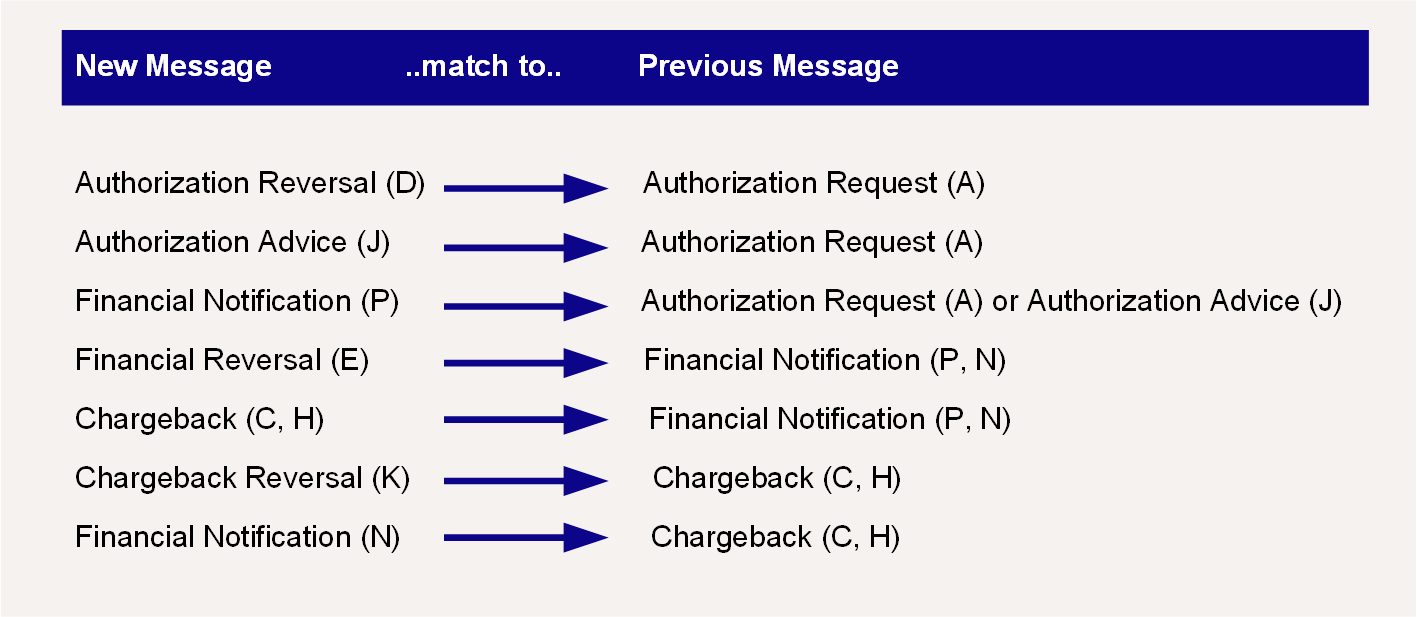4 Transaction Matching
A typical card payment transaction generates multiple messages during its life cycle. The GetTransaction message types you receive for a transaction must be linked to the previous messages for that transaction. This matching enables you to track the history of the transaction, compare the financial effect of a new messages with previous messages and re-calculate card balances.
In Full Service Processing (mode 3) and Cooperative Processing (mode 2), Thredd manages transaction matching.
The matching examples below are for customers connecting to Discover networks. Only transaction types supported in Discover Phase 1 are shown.
4.1 Matching Overview
Your systems should match new to previous transactions as follows:

Figure 10: Transaction Matching Criteria for Discover Networks
For further details, see the Transaction Matching Criteria below.
Where 3D Secure authentication applies, additional transaction matching should be performed to match details in the authorisation to the 3D Secure authentication details. For detail see External Host Interface (EHI) Guide > Transaction Matching - Authentications and Authorisations.
Matching Criteria and Accuracy
Matching a transaction to its original (e.g., Presentment to matching Authorisation, or Authorisation Reversal to matching Authorisation) is based on the information received. In most cases transactions match. However, acquirers do not always send accurate information, so mistakes can occur.1
You can use the following options to find a match:
-
The matching criteria recommended in the section Transaction Matching Criteria
-
Your own matching criteria
-
A combination of both the above.
As a general rule, the more matching fields that correctly match, the more reliable the match. If some fields match and some do not, this indicates an ‘unreliable’ match.
Transaction Matching Criteria
The table below provides best-practise guidelines on how to match transactions.
Match Criteria:
-
If “Match to” is “-“, this means there is nothing to match against.
-
“THIS” = this transaction (i.e., the one with
MTID+Txn_Typefrom the same row) is the transaction you have just received in the EHI message -
“OTHER” = the other transaction (in the “Match to” column) that is being found by matching (to match to THIS)
-
Syntax: OTHER.other_field_name = THIS.this_field_name where the field names refer to the GetTransaction Message Fields.